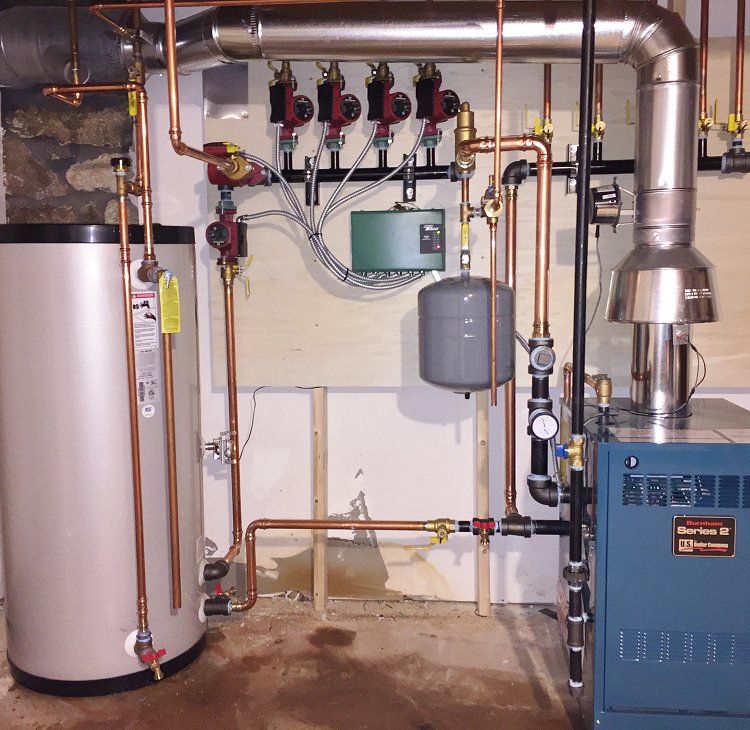Not all furnaces are made equal. You can find excellent products that offer accurate temperature control, indoor comfort, low noise levels, energy efficiency and reliability. However, there are also low-quality furnaces that lack these features, and they can give you many headaches over time.
 source: mathewsplumbing.com
source: mathewsplumbing.com
The following are some common issues you can expect when purchasing a low-quality furnace:
- Excessive fuel consumption and high operating costs
- High noise levels and strange sounds
- Frequent breakdowns and expensive repairs
- Poor temperature control (your home interior gets too cold or too warm)
- Excessive airflow (your home interior becomes uncomfortable due to air drafts)
- Complete system failure within a few years, forcing you to purchase a replacement
Using a low-quality furnace can also be dangerous. The flue gases released when burning fuels like natural gas or heating oil are lethal at high concentrations, and your furnace must be capable of always exhausting and venting them outdoors.
A malfunctioning furnace can release harmful gases inside your home, including carbon monoxide – a deadly substance for humans.
Here we will review six furnace brands you should avoid if you’re looking for a reliable space heating system. We will also discuss some general “red flags” to look out for when comparing different furnace models.
Comparing Furnaces? Watch Out for These Warning Signs
Right off the bat, a good furnace can look identical to a low-quality product. However, you can find important differences if you take the time for a detailed comparison. Here are some common “red flags” to keep in mind:
1) Avoid furnaces with short warranties. The best furnaces now come with a warranty coverage of 10 years or more. When a manufacturer offers a short warranty, they are probably aware that their furnaces are not built to last. For example, if you buy a furnace with a 3-year warranty, don’t expect a service life of 10 years!
2) Watch out for missing technical information. When a furnace offers features like low noise and energy efficiency, the manufacturer will want you to know. For this reason, you should be skeptical of any products that hide key information. The following are some examples:
- If furnace specifications provide no information about noise levels in decibels, the unit is probably very noisy. They don’t want you to know until you have the unit installed at home.
- If the Annual Fuel Utilization Efficiency (AFUE) value is not provided or hard to find, the unit is probably inefficient.
Missing or hard-to-find warranty documents are also a warning sign. There are also cases where the manufacturer provides a warranty that seems decent, but the terms and conditions are deceiving. Make sure you read the fine print.
3) Avoid furnaces with single-stage heating and/or single-speed fans. A high-performance furnace can control its heat output and airflow according to the heating needs of your home. This offers two benefits:
- Your home interior becomes more comfortable (no overheating)
- The furnace consumes less fuel and electricity, by not using its full capacity all the time
Furnaces that always run at full capacity waste energy, while potentially making your home uncomfortable. If a furnace is running at maximum BTU/hour output when the weather is mild, your home will be warmer than necessary. This also represents a waste of energy, driving up your heating bills.
For maximum energy efficiency, you should look for a furnace with variable heating output, also known as a modulating furnace. These furnaces can increase or decrease their output to match the exact heating needs of your home at any time. Two-stage furnaces are also viable if you’re looking for a more affordable (good value) option.